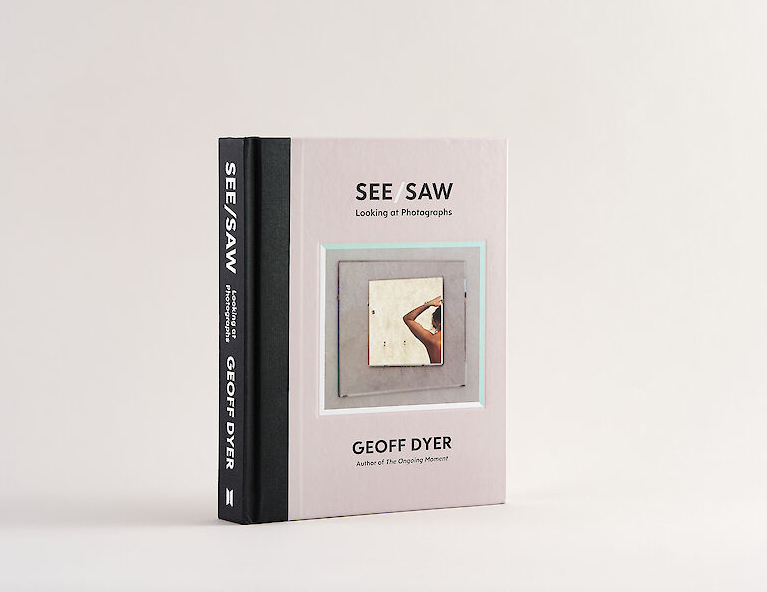See/Saw offers reflections on reading and writing about photography

In this sequel to his awardwinning The Ongoing Moment (2006), Geoff Dyer offers observations on works by 50 photographers (notably just eight of whom are women). The essays, previously published in artist catalogues, newspapers and publications like Aperture during the past decade, are organised by the date of each text’s opening photograph, and thus we are left to infer that there is some sort of history of the medium at play. The range is ostensibly broad, but a glance at the contents page reveals omissions of artists that many would consider part of the canon – among them Walker Evans and Diane Arbus. Yet while their work is not subject to Dyer’s analysis, Evans and Arbus are mentioned so frequently that they attain a sort of omniscient presence over a collection of essays that tell us more about the author’s personal taste than they do about the history of the medium.
See/Saw is divided into three chapters: ‘Encounters’, where Dyer flexes his knowledge of the history of photography and builds his personal canon; ‘Exposures’, snapshotlike texts drawn in part from his regular photo series in The New Republic and focusing more closely on photographs selected from news media; and ‘Writers’, a sort of extended acknowledgements page for three authors – Roland Barthes, Michael Fried and John Berger. (Susan Sontag makes the occasional appearance.) To an extent, then, this is about reading and writing about photographs.
When it comes to writing, Barthes’s influence (including in the title) is most apparent. The theorist’s ideas about photography and time in Camera Lucida (1980) – the subject of the photograph as something ‘irrefutably present, and yet already deferred’ – pervade Dyer’s essays. Elsewhere it’s Evans whom Dyer uses as a crutch, as in a text on Lee Friedlander’s American Monuments (1976), in which he observes that ‘misgivings about a few [monuments] make us newly attentive to the many’. Given that the essay was published just after riots in Charlottesville, sparked by the planned removal of the statue of Confederate general Robert E. Lee, had resulted in the injury of dozens of people and the death of a woman run down by a white supremacist, Dyer’s approach seems bizarrely mild-mannered. Referencing a 1936 photograph of a statue by Evans, the same one Friedlander would document for this series, Dyer’s evaluation sticks to safe ground, parking American Monuments in traditions and genealogies. More saw than see – and dangerously close to unravelling his earlier observations, in an essay on Eugène Atget, that statues ‘may be rooted in a past time but, because they remain at large in the world, that time lives on in them’.
Similarly, in a text on Philadelphia-based Zoe Strauss, Dyer relies heavily on referencing better-known photographers (Evans again, William Eggleston and Nan Goldin) and only allows brief flashes of his evident descriptive talent: ‘In-your-face portraits: faces that looked as worn-out as old rugs, others full of confidence and a beauty rendered more intense by the way that what they were confident of was that the beauty wouldn’t last.’
Dyer’s texts work best when he focuses on the connections between art history and photography. Through Alvin Langdon Coburn’s early-1900s photographs, images that were ‘slightly blurred, hazy, with an emphasis less on documentation than atmosphere and mood’, Dyer traces the aesthetics of Photo-Secession and pictorialism as relatives of Impressionism. Later he draws comparisons between Gary Knight’s photos of us soldiers, specifically a photo taken at Dyala Bridge, Iraq, in the aftermath of an artillery attack in 2003, to nineteenth-century history paintings: there is, Dyer writes, ‘a kind of double stillness: the stunned stillness that comes after battle and the stillness of an oil painting, a stillness that does not stop time but contains it’.
In general, then, See/Saw gives the impression of a writer who is predisposed towards looking over his shoulder at traditions surrounding photography, rather than locating them in the present. But perhaps that’s also the function of the slash in the book’s title: to remind us that photographs always have a way of making us lean into the past.
See/Saw by Geoff Dyer, Canongate, £25 (hardcover)
First published in the April 2021 issue of ArtReview